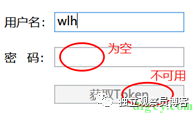如今,当谈到 WPF 时,我们言必称 MVVM、框架(如 Prism)等,似乎已经忘了不用这些的话该怎么使用 WPF 了。当然,这里说的不用框架和 MVVM,并不是说像使用 Winform 那样使用 WPF,而是追本溯源,重识 WPF 与生俱来的绑定和命令的风采。
一、绑定的使用
目标:前台页面通过绑定获取后台属性的值。
这个目标实际上分为两部分,一是前台获取后台的属性值,二是属性值变动后能够及时体现出来。.
要实现目标的第一部分,实际只需在窗体后台的构造函数中添加一行代码即可:
this.DataContext = this;这行代码很关键,MVVM 模式中页面与 ViewModel 关联也是通过指定页面类的 DataContext 为相应的 ViewModel 对象来实现的。
下面再来说说如何实现目标的第二部分,也就是属性变化后能及时体现出来,包括后台属性变化后前台显示自动变化,以及前台修改了内容,后台属性的值跟着改变。众所周知,这就是绑定,而要实现这一功能,需要相关类实现一个属性变动通知接口 —— InotifyPropertyChanged 。具体演变过程可参考网上的文章《 .NET 4.5 (C#):INotifyPropertyChanged 执行的演变:从表达式树到调用方信息的 BindableBase 类型 | Mgen》,这里直接给出最后的结果。
首先,实现 InotifyPropertyChanged 当然是必要的,如果是要绑定其他类,则让该类实现之,如果是直接在窗口后台做相关功能,则最终窗口类看上去像这样:
public partial class MainWindow : Window, INotifyPropertyChanged然后添加一个事件和两个方法:
public event PropertyChangedEventHandler PropertyChanged;protected void OnPropertyChanged([CallerMemberName] string propertyName = null){var eventHandler = this.PropertyChanged;eventHandler?.Invoke(this, new PropertyChangedEventArgs(propertyName));}protected bool SetProperty<T>(ref T storage, T value, [CallerMemberName] String propertyName = null){if (Equals(storage, value)) return false;storage = value;this.OnPropertyChanged(propertyName);return true;}
最后就是要提供绑定的属性了,可以像下面这样写:
private string _UserName = "wlh";public string UserName{get => _UserName;set => SetProperty(ref _UserName, value);}
前台绑定就很简单了:
<TextBox Text="{Binding UserName, Mode=TwoWay}"></TextBox>二、命令 ICommand
WPF 和 Winform 的重大区别就是,用户的交互、数据的变化等,在 Winform 中,都需要程序员一点一点仔细地手动处理,而在 WPF 中,数据是绑定的,交互通过命令传递,所以很多事情其实 WPF 这个大框架就可以帮我们自动处理了。说了这么多,其实就是说 Winform 是事件驱动的,而 WPF 是数据驱动的,所以在 Winform 中常用的按钮点击事件等各种事件,在 WPF 中是不怎么用了,而是使用命令。
命令也是绑定的,先来看看前台的样子:
<Button Command="{Binding GetTokenCommand}">获取Token</Button>至于后台怎么写,先不急,通过《[WPF] ICommand 最佳使用方法》一文,我们知道首先需要一个辅助类:
public class <span class='wp_keywordlink_affiliate'><a href="http://dlgcy.com/tag/relaycommand/" title="View all posts in RelayCommand" target="_blank">RelayCommand</a></span> : ICommand{private readonly Predicate<object> _CanExecute;private readonly Action<object> _Execute;public RelayCommand(Predicate<object> canExecute, Action<object> execute){this._CanExecute = canExecute;this._Execute = execute;}public event EventHandler CanExecuteChanged{add => CommandManager.RequerySuggested += value;remove => CommandManager.RequerySuggested -= value;}public bool CanExecute(object parameter){return _CanExecute(parameter);}public void Execute(object parameter){_Execute(parameter);}}
可见 ICommand 中主要有两个方法,一个检查命令是否可用的 CanExecute (),以及实际干活的 Execute () 。
然后在后台添加一个 “DoSomething” 的命令,也就是上面新建的 RelayCommand 类型:
private ICommand _DoSomething;public ICommand DoSomethingCommand{get{return _DoSomething ??= new RelayCommand(o => _CanDoSomething(o),o => { _DoSomethingMethod(o); });}}private readonly Predicate<object> _CanDoSomething = o => true;// 可在之后再赋值,避免方法体中访问属性等受阻;private readonly Action<object> _DoSomethingMethod = o =>{// do something};
这些还可以进一步简化为:
public ICommand DoSomethingCommand { get; set; }/// <summary>/// 命令方法赋值(在构造方法中调用)/// </summary>private void SetCommandMethod(){DoSomethingCommand ??= new RelayCommand(o => true, async o =>{// do something});}
最后来看看对应前台”GetTokenCommand” 命令的实际业务代码:
public ICommand GetTokenCommand { get; set; }/// <summary>/// 命令方法赋值(在构造函数中调用)/// </summary>private void SetCommandMethod(){GetTokenCommand ??= new RelayCommand(o => !(string.IsNullOrEmpty(UserName) || string.IsNullOrEmpty(Password)), async o =>{var req = new ReqGetToken(){userName = UserName,password = Password,};var res = await GetToken(req);if (res.Code){Token = res.Token;}});}
可以看到,在检查命令是否可用的部分,没有像样板代码那样直接返回 true ,而是按照实际情况判断,这样的效果就是,当条件不满足时,前台相关控件自动禁用:

最后,经过我们这样写,其实和 MVVM 模式已经很接近了,只要把后台所有代码都移到另一个类,然后将页面的 DataContext 重新指定一下,就能实现页面显示和业务逻辑分离了。
